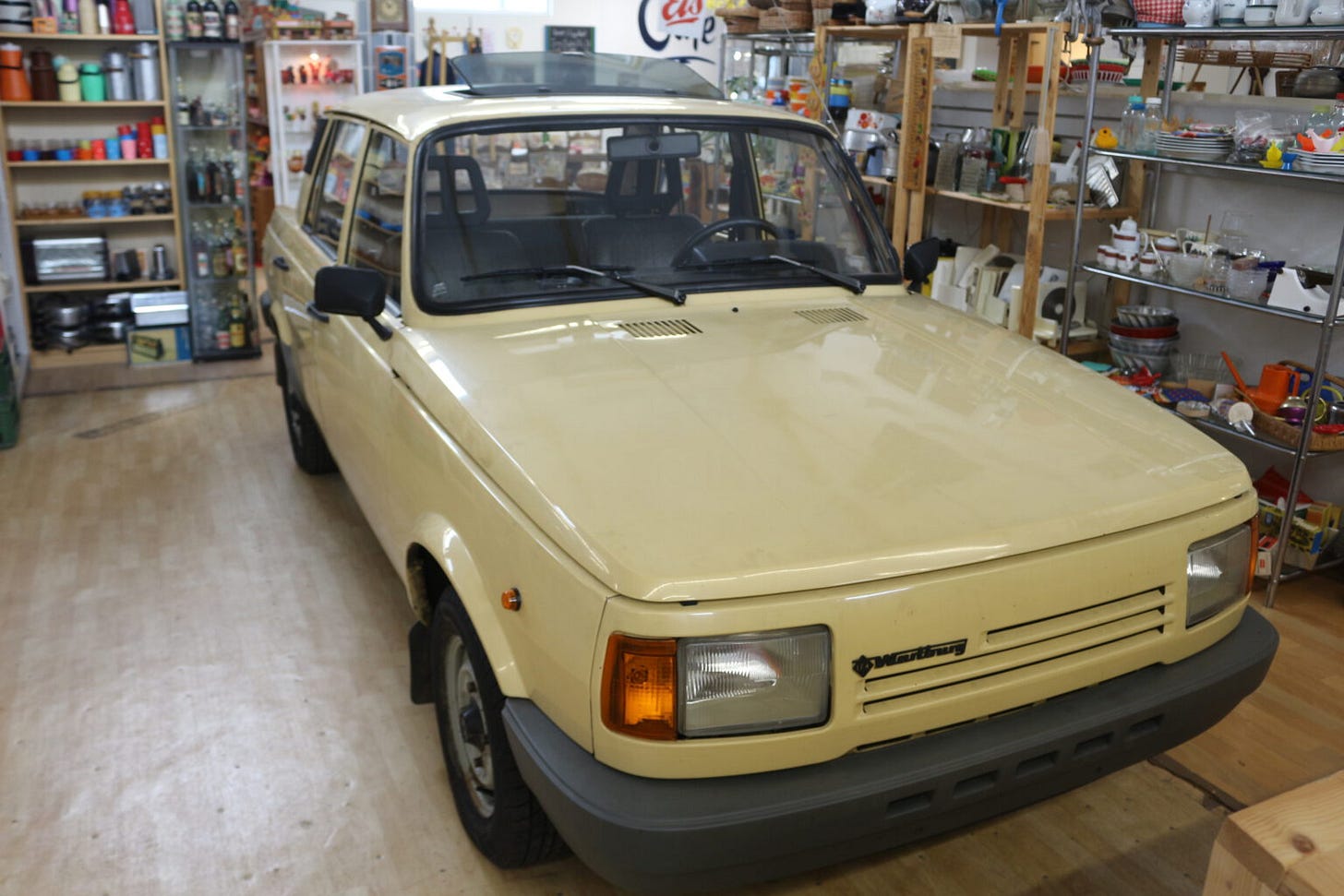When countries die...
...what happens to their things?
When countries die, they leave their effects behind. Like people, they accumulate things while they exist. When they go, physical objects remain. When East Germany ceased to be in 1990, this is what happened. The country disappeared overnight but the things it had produced did not.
This thought provided the backdrop to my journey through eastern Germany this week. Wherever I went — from Greifswald in the north to the Rhön Mountains in the southwest of the former GDR — I saw traces of the former East Germany. Some had survived by accident or convenience, others were carefully preserved for the future.
What is the right way to deal with remnants of the GDR? What happens when the people who still own many of these objects die? Will their children and grandchildren throw them away or keep and preserve them? I had pondered this many times before, but this time, it became a personal question for me. I was on my way to my first talk about the GDR in Greifswald when my phone rang. My grandmother had just died.
There was no time to process this. My public talk was due to start in just a few minutes. So I parked the shock at the back of my mind before it had a chance to expand, took a deep breath and walked into the venue.
Keep reading with a 7-day free trial
Subscribe to ZEITGEIST to keep reading this post and get 7 days of free access to the full post archives.


